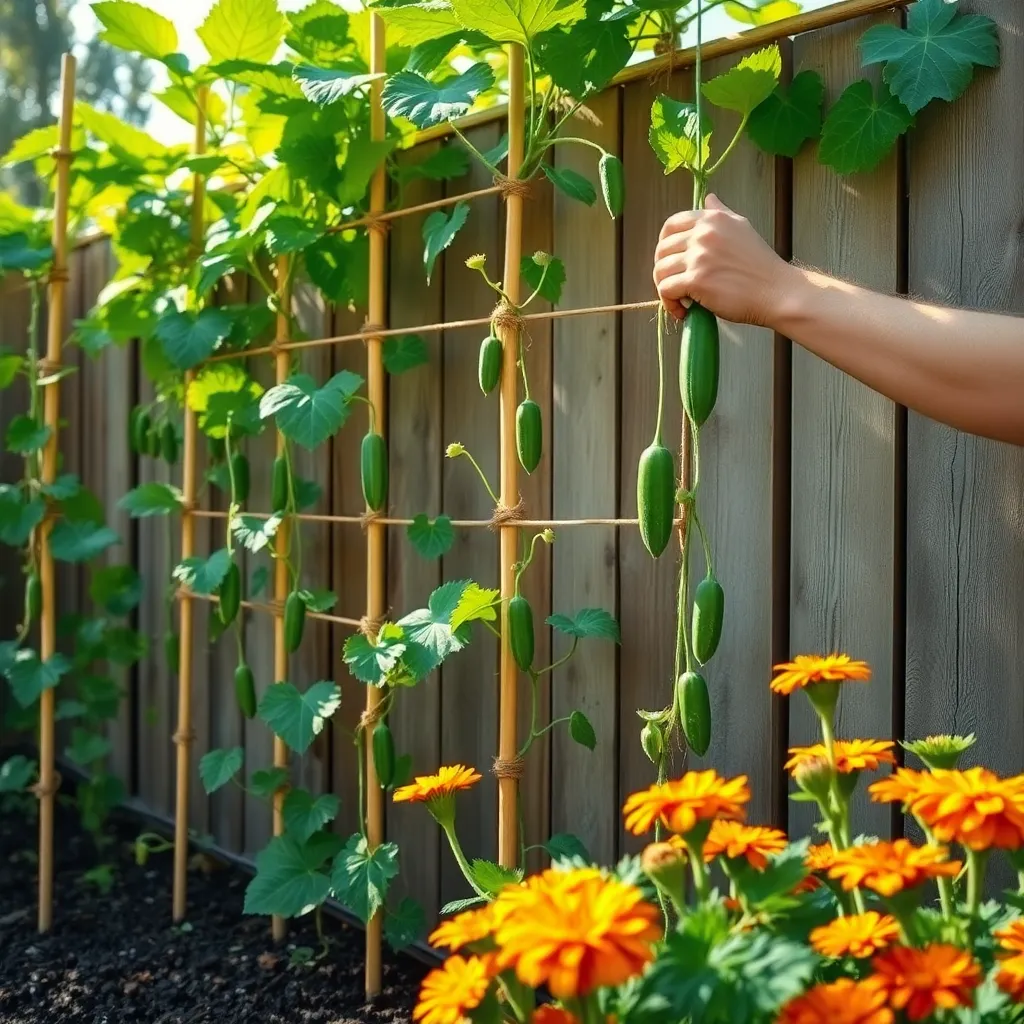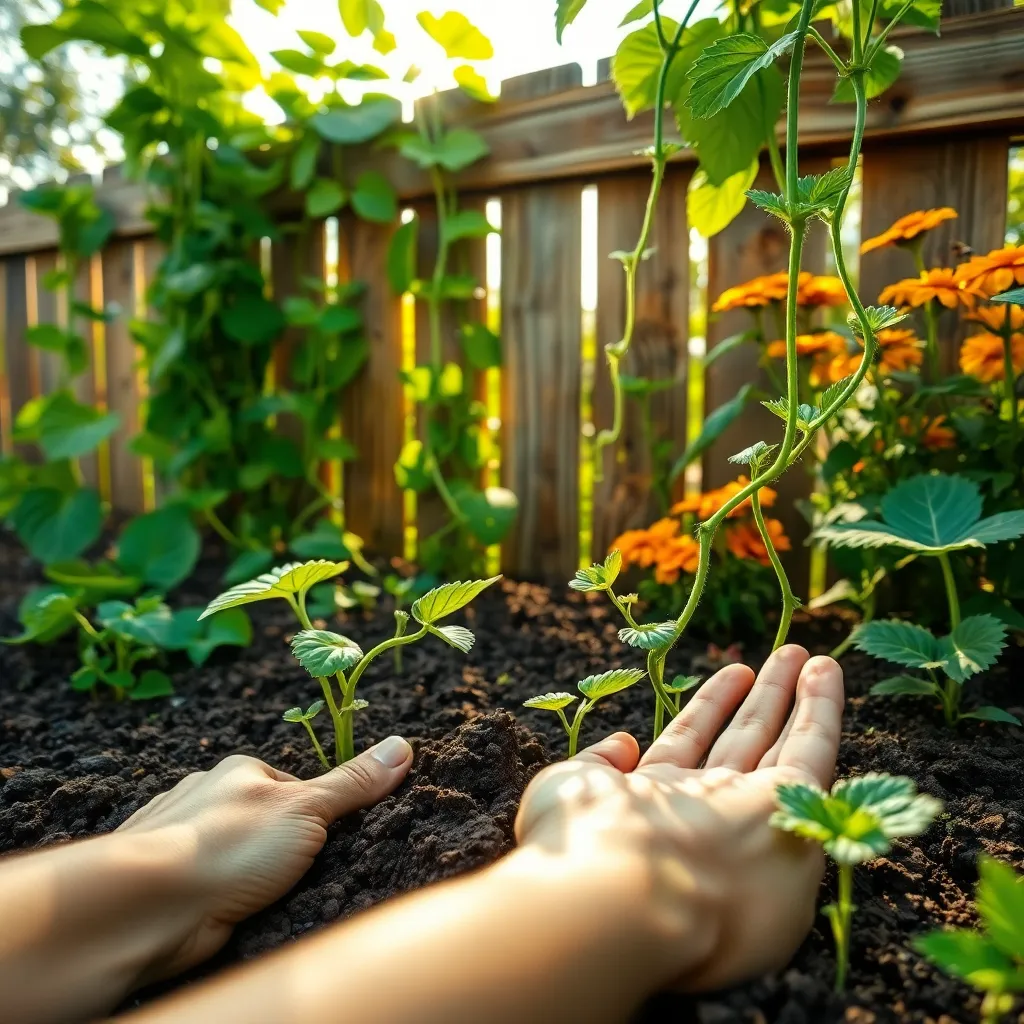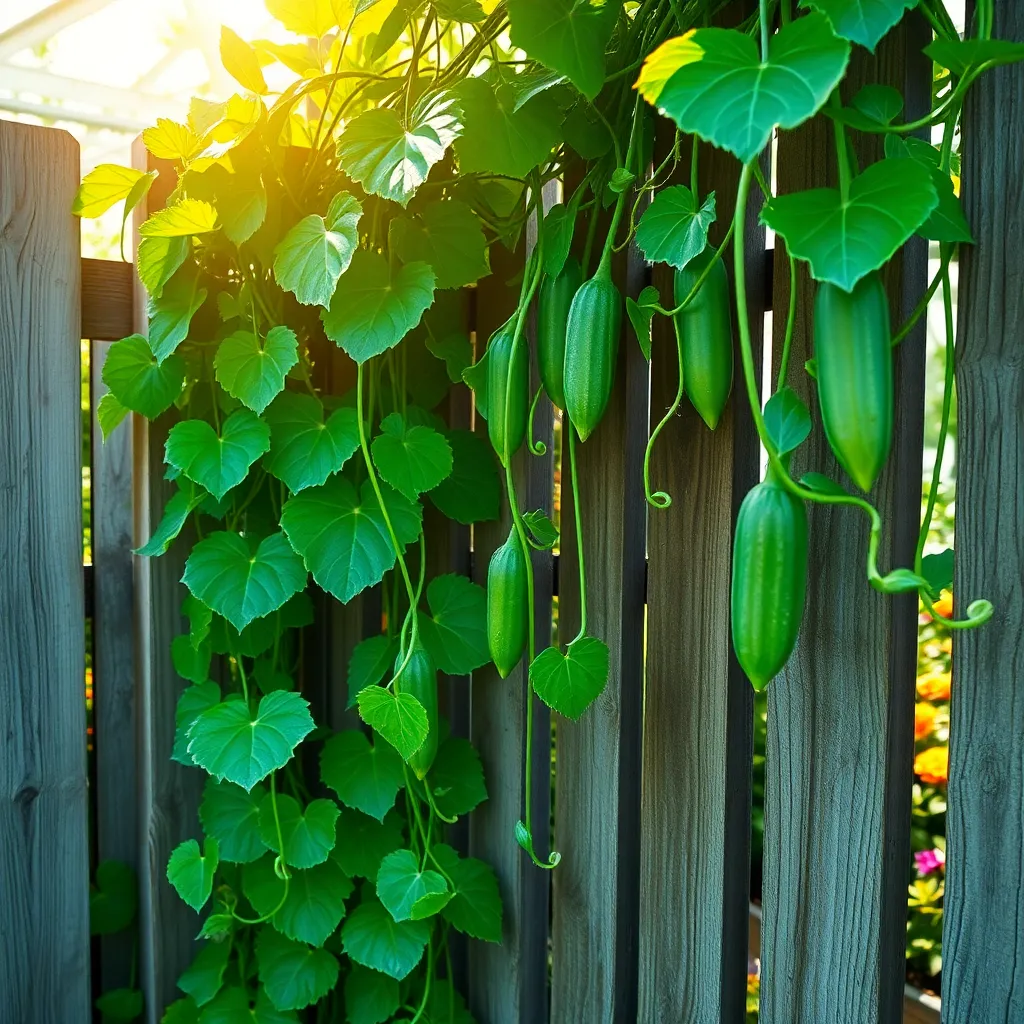Imagine stepping into your garden and reaching out to pluck a crisp, homegrown cucumber from a lush, vertical vine. Growing cucumbers on a fence not only maximizes your garden space but also adds an enchanting touch of greenery to your outdoor haven. Whether you’re just starting your gardening journey or you’re a seasoned green thumb, cultivating cucumbers vertically can transform your garden into a vibrant oasis. It’s an ingenious way to make the most of limited space while keeping your cucumbers healthy and easily accessible.
Vertical gardening with cucumbers offers a plethora of benefits that go beyond aesthetics, and it’s easier than you might think. By training your cucumber vines to climb, you can improve air circulation, reduce pest issues, and simplify the harvesting process. In this article, you’ll learn how to select the right cucumber varieties for vertical growth and discover step-by-step guidance on setting up your fence for optimal support. We’ll also explore essential tips for nurturing your cucumber plants, from soil preparation to watering strategies, ensuring you enjoy a bountiful harvest.
Embarking on this vertical adventure will open up new opportunities for creativity and efficiency in your garden. You’ll find practical advice on everything from choosing the right materials to crafting a sturdy support system that can withstand the weight of thriving cucumber vines. With these insights, even the smallest garden can produce a generous yield, promising fresh cucumbers for your salads, pickles, and summer snacks. This guide will empower you to embrace the art and joy of growing cucumbers on a fence, turning your garden into a place of beauty and plenty.
Select a Suitable Fence Location

When selecting a location for your cucumber fence, ensure it receives at least six to eight hours of direct sunlight daily. Cucumbers thrive in sunny spots, and a well-lit area will promote healthy growth and higher yields.
It’s also important to consider the soil quality where you’ll place the fence. Ideal soil should be well-draining and rich in organic matter; you might consider adding a layer of compost to enrich the soil before planting.
Make sure the fence is positioned to provide adequate air circulation around the plants. This helps prevent diseases like powdery mildew, which can be a common issue for cucumbers grown in crowded or poorly ventilated areas.
For gardeners working in windy areas, use the fence as a windbreak to protect young plants. Positioning the fence strategically can reduce plant stress and prevent damage from strong gusts, especially in the early stages of growth.
Prepare Soil Along the Fence

After selecting the perfect fence location, the next step is to prepare the soil properly. Start by clearing the area along the fence of any debris, weeds, and rocks that could hinder cucumber growth.
Loosening the soil is crucial for root development, so use a garden fork or tiller to break up the soil to a depth of at least 12 inches. This also improves aeration and drainage, which are essential for healthy cucumber plants.
Enrich the soil with organic matter to provide nutrients and improve texture. Incorporate well-rotted compost or aged manure into the soil, mixing it thoroughly to ensure even distribution.
For optimal results, test the soil pH, which should be between 6.0 and 7.0 for cucumbers. If necessary, adjust the pH by adding lime to raise it or sulfur to lower it, ensuring the soil conditions are ideal for cucumber growth.
Install Support Structures Securely

To successfully grow cucumbers on a fence, it’s crucial to install support structures securely. Begin by choosing sturdy materials, such as galvanized wire or heavy-duty garden twine, which can withstand the weight of mature cucumber vines.
Next, attach the support to the fence at regular intervals to ensure even coverage. Space the supports about 12 inches apart to provide ample room for the vines to climb and spread.
Use strong clips or ties to fasten the cucumber vines gently to the supports as they grow. This not only helps guide the vines but also prevents them from becoming tangled or damaged by wind.
For an advanced technique, consider using a vertical trellis in conjunction with your fence. This method can maximize space and improve air circulation around the plants, reducing the risk of fungal diseases.
Regularly check the stability of your support structures throughout the growing season. Reinforce any areas that seem unstable to prevent collapses, which can damage your plants and reduce yield.
Plant Cucumber Seeds Strategically

To successfully grow cucumbers on a fence, start by planting seeds at the right time. Aim to sow them outdoors when the soil has consistently warmed to at least 60°F (16°C), which typically occurs in late spring.
When planting cucumber seeds, consider spacing them strategically to maximize growth. Space seeds about 12 inches apart along the base of the fence, allowing each plant enough room to develop and climb.
Ensure the soil is well-prepared by mixing in organic compost to improve fertility and drainage. Cucumbers thrive in loamy, well-drained soil, so incorporating organic matter will support healthier root systems and more robust growth.
For best results, water the seeds thoroughly after planting and keep the soil consistently moist but not waterlogged. Use a soaker hose or drip irrigation system to provide a steady supply of moisture, which is crucial for germination and early growth stages.
As seedlings emerge, thin them to the strongest plant at each planting spot to reduce competition for nutrients and light. This careful thinning ensures that each remaining cucumber plant can fully utilize the available resources and grow vigorously.
Guide Vines and Tendrils Upwards

As your cucumber plants begin to grow, it’s crucial to guide their vines and tendrils upwards onto the fence. This not only supports healthy growth but also maximizes space in your garden.
To start, gently weave the young vines through the fence’s openings. Avoid forcing them, as cucumber vines are delicate and can easily break.
Use soft ties, such as garden twine or strips of fabric, to secure the vines to the fence as they grow. Ensure the ties are loose enough to allow for stem expansion and avoid constriction.
Regularly check the growth direction, and continue to train any wayward tendrils back onto the fence. This will help maintain a tidy appearance and enhance airflow, reducing the risk of fungal diseases.
For advanced gardeners, consider the vertical spacing of your vines to optimize sunlight exposure. Strategically positioning the vines ensures all leaves receive ample light, promoting a more bountiful harvest.
Conclusion: Growing Success with These Plants
In nurturing your relationship garden, akin to growing cucumbers on a fence, we explored five vital concepts: communication as the trellis that supports growth, mutual respect as the rich soil nourishing bonds, patience as the sunlight fostering development, adaptability in overcoming challenges like unpredictable weather, and shared goals as the harvest you both anticipate. These insights are more than just principles; they are the sturdy framework for a flourishing partnership.
As your immediate action step, pick one concept to focus on today—perhaps improving communication by setting aside time for an open, honest conversation. This small step can lead to significant growth in your relationship.
Remember to save or bookmark this article as a handy guide to revisit whenever you need a refresher on nurturing your relationship. Just like tending to a garden, successful relationships require ongoing care and attention. By cultivating these key concepts, you’re not only building a strong foundation for today but also sowing seeds for a thriving future together. Embrace the journey, and watch as your relationship blossoms into something truly beautiful.
